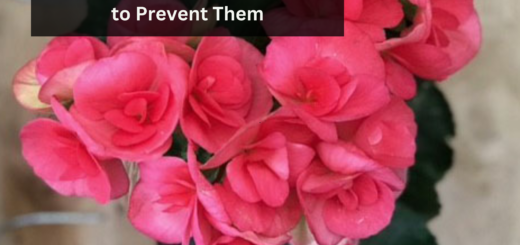Narcissus vs. Daffodil vs. Jonquils – Actual Differences and Identification
In this article, we will be discussing a comparison of Narcissus vs. Daffodil vs. Jonquils. Every year, keen gardeners are introduced to new daffodil cultivars. There are countless possibilities, including several hues, double petals, larger and greater, or cuter and smaller. Its scientific name for such a genus of plants is Narcissus, and it is frequently used to sell these products.
Because they are grown from bulbs, the flowers require little maintenance and produce more plant material each year. Among other plants that have a similar appearance, jonquils are also mentioned. What distinguishes jonquil, daffodil, and narcissus from one another? Jonquils (Narcissus jonquilla) is one of the thirteen subgroups of daffodils, according to the American Daffodil Society. Zones 3 through 9 of the U.S. Department of Agriculture’s plant hardiness chart are favorable for most Narcissus hybrids.
Over 25,000 registered hybrids are categorized according to bloom color, size, and form, foliage type, flowering schedule, and the number of flowers on a stem. These perennials are all members of the Narcissus genus. Let’s find out.
Narcissus vs. Daffodil vs. Jonquils
Jonquils and daffodils have a lot in common. In actuality, jonquils are a variety of daffodils, although not all daffodils are jonquils. The flower genus Narcissus includes jonquils and daffodils. Both are frequently called Narcissus.
Jonquils are hybrids that fall within division 7 of something like the 13 divisions of daffodils, which are used to recognize, categorize, and group the numerous types of daffodils. The foliage can be used to distinguish jonquils from daffodils.
The tips of jonquil leaves are spherical, as opposed to the pointed tips of daffodil leaves. Jonquil stems, which are hollow and often a little bit shorter than daffodil stems, are another way that they differ from daffodil stems. The length of the flowers also reveals the kind of plant.
Comparison of the traits of daffodils and jonquils
Daffodils come in 200 species, more than 25,000 cultivars, and more varieties every year. Jonquil hybrids are found in Class 7, while the species is found in Class 13 The biggest difference between jonquils and daffodils is in the leaves.
While daffodils have thin leaves with sword-like points, jonquils contain slender leaves that are spherical on the tips. The stems of jonquils are hollow and often shorter than those of the daffodil species. They typically have clusters of blossoms on the stems and lovely smells.
In terms of bloom shape and color, they are similar to daffodil bulbs, and the majority of gardeners are unable to tell them apart. The corollas of jonquils are smaller than those of daffodils.
And whereas jonquils only come in yellow, daffodils are available in a variety of colors, including white, peach, and pink. Whichever variety you choose, both bulbs require the same care and planting just like canna bulbs, and also the appearance of a sea of golden blossoms is equally appealing.
Talking About Jonquilla
In some regions of the country, gardeners refer to any yellow daffodil as a jonquil, however, this is generally false. The majority of jonquilla hybrids have several yellow flowers on a stem and a potent, sweet aroma.
Their leaves will likely be reed-like, thin, and dark green. Two small-flowered jonquils with pastel-yellow and golden-yellow hues, “New Baby” and “Baby Moon,” respectively. “Quail” has a bigger, solid yellow blossom and comparable traits to “Baby Moon.”
Jonquil Varieties:
The jonquil plants consist of a number of cultivars that have been developed by process of selective breeding.
They do have differences in some way such as:
- Between 8-18 inches tall
- Multiple blooms per stem
- Short cup with ray florets
- Dark green, rush-like leaves
- Strong fragrance
the following are different varieties of jonquils that are used to bloom throughout spring season:
| Trevithian | Light yellow fragrant blooms2-3 flowers per stem |
| Silver Smiles | Mid-season bloomerWhite petals with a light yellow cup |
| Sweetness | Bold yellow bloomsCan grow to over a foot tallFragrant early bloomer |
| Quail | Deep, bronzey blooms2-4 flowers per stem |
| Pueblo | White petals with a pale yellow cupMid-season bloomer |
| Pipit | Fragrant, yellow petals with a pale white cup2-3 blooms per stem |
| Bell Song | Miniature daffodil variety in which the flower bloom from 2 to 3 stemlvory petals having pale pink or yellow cup of flowers. |
| Baby Moon | Miniature daffodil varietyFragrant, late-season jonquilDeep yellow blooms |
Talking About Daffodils
The real bulb from which daffodils develop. The biggest and also most sturdy bulbs should be purchased from the nursery, and they should be buried twice as deep as they are long. They thrive in direct sunlight, and the flowers typically emerge towards the sun.
Daffodils may grow in a variety of soil types as long as they have good drainage and are not very alkaline. In many areas, perennial plants just require water that naturally falls as rain. According to the cultivar & your climate, daffodils bloom for six weeks to six months. As the bulb rebuilds and grows for the following year after flowering stops, the plant remains green.
The following are some different varieties of daffodil:
| 1 | Trumpet Daffodil | One bloom per stemThe Corona of the plant is longer than the petals |
| 2 | Large-Cupped Daffodil | The cup size of the flower is more than one-third length of the petals of One flower per stem |
| 3 | Small-Cupped Daffodil | Narrow leaves strong fragrance1-3 small, flat-petaled blooms per stem |
| 4 | Double Daffodil | The cup size is smaller than the one-third size of the petals of one flower per stem. |
| 5 | Triandrus Daffodils | The flowers are used to bloom in clusters of cups and petals. There can be multiple flowers per stem |
| 6 | Cyclamineus Daffodil | Blooms that hang down like bells to or more blooms per stem |
| 7 | Jonquilla Daffodil | They are let to bloom in clusters of three or more florets having Thick leaves and stemFragrant blooms |
| 8 | Tazetta Daffodil | Bright, white flowers with small, crinkled cup green center with yellow and red rimOne bloom per stem |
| 9 | Poeticus Daffodil | One bloom per stem Corona of the plant is longer than the petals |
| 10 | Bulbocodium Hybrid | Small petals with “hoop petticoat” cup |
| 11 | Split-Cupped Daffodil | The cups of the flower are used to split that resemble into the second layer of petals. |
| 12 | Miscellaneous Daffodil | Qualities don’t fit into other 11 divisionsOften hybrids |
| 13 | Wild Hybrid | Wild, naturally growing daffodil variants |
Talking About Narcissus
It can be challenging to identify the attractive spring blooming by its common names, such as jonquil, daffodil, and narcissus. Generally speaking, “jonquil” refers to N. jonquilla, which frequently has fragrant, yellow blooms, while “daffodil” implies the large-flowered variations.
Small-flowered, early-blooming plants that produce clusters of blossoms are referred to as “narcissus.” The corona, which is the heart of bloom and is fashioned like a trumpet or cup, is separated from the perianth, which is composed of six outer petal sections, by a division in half.
Daffodils can occur in orange, crimson, apricot, pink, and cream in addition to the traditional yellow and white blossoms. In certain species, the perianth & corona have distinct hues or various tints of the same hue. Leaves can be either thin and prickly or flat and straight.
Plant Hardiness Zones:
In case you are confused about growing daffodils, jonquils, and buttercups in your garden you need to determine the plant hardiness zone map with your region. By which you can easily decide which plant will grow best at your location.
| Plant | divisions |
| Paperwhite narcissus | 8-11 |
| Daffodil | 4-8 |
| Jonquil | 5-9 |
| Buttercup | 5-11 |
Should I plant daffodils or jonquils?
In case you are clear to find the difference between Daffodils and Jonquils it means you have great experience in gardening. If you are standing far it is really hard to find the difference between Jonquils and Daffodils.
These are the plants that used to bloom in the same shape having either yellow, white, or orange color always depending on plant varieties. Only you can differentiate if you see them closely. You can also differentiate from the shape of the leave and the number of flowers blooming on each stem. If you really are confused about what to plant then I suggest you plant them after knowing the different varieties and hardiness zone of your location which variety will grow best.
Summing Up
This was all about the difference between narcissus, daffodils, and jonquil. We hope you find this article helpful. Stay tuned for future articles. Let us know how much you like these articles and share them with loved ones who love gardening. Thanks for reading!
FAQs
1. Are Narcissus and daffodil flowers the same?
Yes, the Narcissus and daffodil flowers are almost the same.
2. What is the difference between Jonquil and Daffodil?
The jonquil flowers come in shades of yellow whereas daffodils come in various shades like pink, peach, and others.


